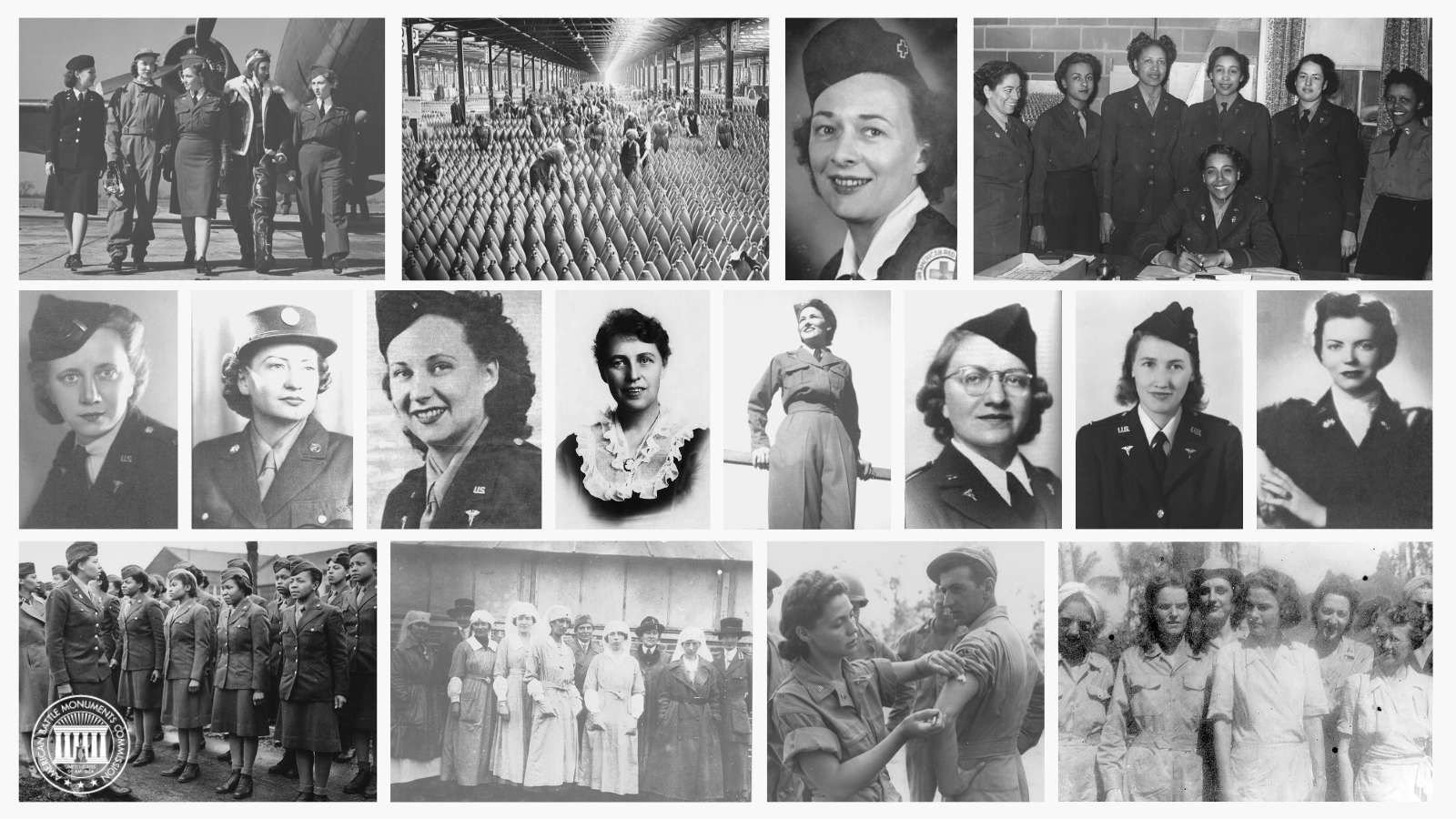During World War I, the official service of women on the warfront rapidly developed at an unprecedented scale. American women served overseas as nurses, communication technicians, social workers and volunteers, providing critical skills and care for the American Expeditionary Forces.
Over 200,000 women served in the U.S. Army Nurse Corps, with 10,000 serving overseas, 200 of which died of the Spanish influenza pandemic of 1918-1919. Women also served in other roles, such as the 400 “Hello Girls” who acted as telephone operators in France. Fluent in English and French, they played a vital role in connecting Allied communications. Inez Ann Murphy Crittenden was one of them. She served in France during the Great War and died of the Spanish Flu on Nov. 11, 1918. She was 31 years old, and is buried at Suresnes American Cemetery.

An additional 11,000 American women served in the U.S. Navy, while smaller numbers served for the first time in the Coast Guard and U.S. Marine Corps. Thousands of additional women supported the troops overseas through volunteer organizations such as the Red Cross, the YMCA, and the Salvation Army.
The contributions of women directly to the war effort not only contributed to success on the battlefield, but began to effect changes towards equality at home. As the military pulled 16 percent of the male work force into uniform, women stepped in to keep the economy moving, including working in such “masculine” jobs as factory and farm workers, drivers, and mechanics.
The wartime contributions of women were critical to the post-war success of the suffrage movement; President Woodrow Wilson himself converted to support for women’s voting rights based on their wartime contributions.
During World War II, women supported and served our country abroad and at home. They served bravely and with distinction from the initial attack on Pearl Harbor, to V-E Day in Europe, through the last days of the Pacific campaign. During the war, women’s auxiliaries were created for each branch of the military, including the Women’s Army Corps (the WACs), Women Accepted for Volunteer Emergency Service (the WAVES of the U.S. Navy), the Marine Corps’ Women’s Reserve, and the Women Airforce Service Pilots (the WASPs).
Women in uniform not only assumed clerical positions to free more men for combat positions, they also drove trucks, repaired airplanes, worked as laboratory technicians, rigged parachutes, served as radio operators, analyzed photographs, flew military aircraft across the country, and test-flew newly repaired planes.
Women also served near the front lines in the Army Nurse Corps, where 16 were killed as a result of direct enemy fire, including Aleda E. Lutz, one of the first American women to die in combat during World War II. On Nov. 1, 1944, she was fatally injured in a plane crash near Saint-Chamond, Loire, France. The plane was transporting nine wounded American soldiers and six German prisoners of war to a hospital in Italy when it crashed during a violent storm. There were no survivors. Lutz was 28 years old, and the only female on the plane. At the time of her death, Lutz was perhaps the most experienced flight nurse in the U.S. military service. She had the most evacuation sorties (196), most combat hours flown by any flight nurse (814) and the most patients transported by any flight nurse (3500+). Lutz is the only woman buried in Rhone American Cemetery.
Over 350,000 women served in uniform during the war, with over 2,000 receiving decorations for valor. One of these examples is 1st Lt. Anna M. Fisher, a member of the Women’s Army Corps (WAC). Fisher was assigned to a communications company where she not only learned the maintenance and operation of switchboards, but also the science behind various forms of cable communication. She served in North Africa and in Europe, assigned to the communications section of the 15th Air Force Headquarters (HQ) as one of only two WACs working there. She also did cryptographic work that included the coding and decoding of messages to and from HQ. Later, she would lead the effort to break German communications lines by decoding intercepted messages. She died in a plane crash in Italy on April 20, 1945. She is buried in the Sicily-Rome American Cemetery in Italy.ABMC sites honor 70 women who lost their lives in World War I and 111 women who died in service during World War II.

Commissioners Amy Looney Heffernan and Gail Berry West actively sought to highlight the contributions of women to our nation’s history and defense. In Commissioners recorded short videos that honor and remember those who made the ultimate sacrifice, those who served in the past and those who continue to serve today.
 An official website of the United States government. Here's how you know.
An official website of the United States government. Here's how you know. 